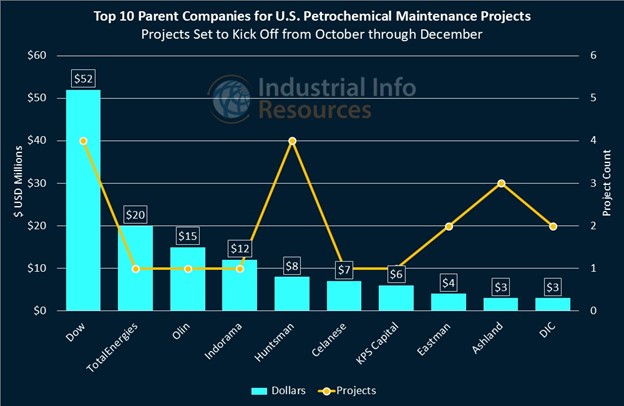U.S. Shines Light on Solar-Component Market with Tax Credit
U.S.-based manufacturers of crucial solar-energy components are getting a much-needed boost from Uncle Sam. Projects to develop solar ingots and wafers now qualify for a 25% tax credit under a new rule from the U.S. Department of the Treasury, which extends the reach of the 2022 U.S. CHIPS Act from semiconductors to solar technology. Industrial Info is tracking more than $15 billion worth of active and proposed projects across the U.S. geared toward the development of solar-energy components, including $1.5 billion specifically toward the development of solar wafers.

“For the last two years, SEIA has been urging the administration to use all of the tools at its disposal to support ingot and wafer production," said Abigail Ross Hopper, the chief executive officer of the Solar Energy Industries Association (SEIA), in a press release following the Treasury's announcement. "Supply-chain accessibility and security remains one of our biggest challenges in the U.S. solar and storage industry. While the United States is a global leader in module manufacturing, we don’t have any ingot and wafer facilities in operation yet, representing a critical gap in the solar supply chain."
Indeed, solar modules, which comprise panels and their attached cells, account for more than $10 billion of the $15 billion total tracked by Industrial Info. Two high-value grassroot projects are set to wrap up in the coming months: Hanwha QCells' (Seoul, South Korea) $2 billion panel-manufacturing plant in Cartersville, Georgia, which is designed to produce 3.3 gigawatts (GW) of panels annually for both the U.S. and international markets, and First Solar Incorporated's (NASDAQ:FSLR) (Tempe, Arizona) $200 million manufacturing facility in Perrysburg, Ohio, which will include a research and development center.
Subscribers to Industrial Info's Global Market Intelligence (GMI) Industrial Manufacturing Project Database can read detailed reports on the Georgia and Ohio projects.
First Solar, in particular, is on a buildout streak. The company recently opened a solar panel-manufacturing facility in Alabama, which is expected to bring the company's capacity in the U.S. to almost 11 GW once fully operational, and it has other developments underway in Louisiana. For more information, see September 27, 2024, article - First Solar Opens Solar Panel Manufacturing Facility.
Other module developers are renovating existing facilities to add production capacity. REVKOR Energy Holdings Incorporated (Salt Lake City, Utah) expects to finish construction toward the end of the year on a $550 million plant renovation in Salt Lake City to facilitate the production of solar cells and modules, while Trina Solar (Fremont, California) is performing $200 million in modifications and installations to a building in Wilmer, Texas, to produce 5 GW of high-output modules. Subscribers can read detailed reports on the Utah and Texas projects.
The largest wafer-manufacturing project currently proposed for the U.S. comes from a European company: NorSun AS (Oslo, Norway), which aims to build a two-phase wafer plant in Tulsa, Oklahoma. Developed in conjunction with Tulsa International Airport, next to which it would be located, Phase I would produce up to 5 GW of high-performing silicon ingots and wafers; a Phase II expansion would double capacity. Subscribers can learn more from a detailed plant profile and project reports for Phase I and Phase II.
Last year, Silfab Solar (Mississauga, Ontario) agreed to purchase wafers from NorSun’s U.S. and European factories, which it will use to produce modules at its $150 million plant in Fort Mill, South Carolina, nicknamed "Project Mountie." The project, which is nearing construction, would renovate an existing property to produce 1 GW of solar cells and 1.2 GW of solar panels for the U.S. market. Subscribers can learn more from a detailed plant profile and project report.
“Domestic production of solar cells represents a strategic effort to further manage our supply chain and to apply our technical prowess from the ground up for a comprehensive manufacturing process,” said Paolo Maccario, the chief executive officer of Silfab, in a press release.
Subscribers to Industrial Info's GMI Project and Plant databases can click here for a full list of detailed reports for projects mentioned in this article, and click here for a full list of related plant profiles.
Subscribers can click here for a full list of reports for active and proposed projects across the U.S. geared toward the development of solar-energy components.

